
HYDROPONICS
The Complete Guide to Design an Inexpensive Hydroponic Garden at Home to Grow Vegetables, Fruits and Herbs
Marteen Baker
Copyright 2020 by Marteen Baker
All rights reserved.
This document is geared towards providing exact and reliable information with regards to the topic and issue covered. The publication is sold with the idea that the publisher is not required to render accounting, officially permitted, or otherwise, qualified services. If advice is necessary, legal or professional, a practiced individual in the profession should be ordered.
From a Declaration of Principles which was accepted and approved equally by a Committee of the American Bar Association and a Committee of Publishers and Associations.
In no way is it legal to reproduce, duplicate, or transmit any part of this document in either electronic means or in printed format. Recording of this publication is strictly prohibited and any storage of this document is not allowed unless with written permission from the publisher. All rights reserved.
The information provided herein is stated to be truthful and consistent, in that any liability, in terms of inattention or otherwise, by any usage or abuse of any policies, processes, or directions contained within is the solitary and utter responsibility of the recipient reader. Under no circumstances will any legal responsibility or blame be held against the publisher for any reparation, damages, or monetary loss due to the information herein, either directly or indirectly.
Respective authors own all copyrights not held by the publisher.
The information herein is offered for informational purposes solely, and is universal as so. The presentation of the information is without contract or any type of guarantee assurance.
The trademarks that are used are without any consent, and the publication of the trademark is without permission or backing by the trademark owner. All trademarks and brands within this book are for clarifying purposes only and are the owned by the owners themselves, not affiliated with this document
Table Of Contents
T he term hydroponics is derived from the fusion of two Greek words, hydro, meaning water and ponos, meaning labour, i.e., working water. The term first appeared in a scientific journal paper (Science, Feb 178:1) written in 1937 and published by W.F. Gericke, who accepted this term as proposed by Dr. W.A. Setchell. Dr. Gericke began working with hydroponic growing methods in the late 1920s, and then wrote one of the early books on soilless growth (Gericke, 1940). Later, he suggested that the capacity to cultivate crops hydroponically would no longer be 'connected to the soil, but that some crops could be produced in greater amounts without soil in reservoirs containing plant food solutions.' What Dr. Gericke did not predict was that hydroponics would, in the future, be primarily limited to its use in cramped conditions for high cash-growing v.
Hydroponic Definitions
- The New World College Dictionary defines hydroponics as "the method of growing or cultivating plants in nutrient-rich solutions or inert wet material instead of soil;"
- Random House Webster's College Dictionary, 1999, as "the cultivation of plants by rooting in liquid fertilizer solutions rather than in soil; the soil-less growth of plants;" and the Oxford English Dictionary, Second Edition. It is important to note that hydroponics is grouped as "science" under only two of the six definitions. The following are discovered in the quest for meanings of hydroponics in different books and articles.
- Devries (2003) describes hydroponic plant cultivation as "one in which all nutrients are supplied to the plant by irrigation water, the growing substrate being soilless (mostly inorganic) and the plant being produced to bring forth flowers or fruits which are in turn harvested for marketing.
- In addition, someone also noted that "hydroponics used to be considered a method where there was no growing medium at all." Nevertheless, it is now recognized that a soilless growing medium is often used to sustain the plant root system physically and to provide a beneficial solution shield around the root system.
- "Resh (1995) describes hydroponics as" the science of growing plants without the use of soil but by the use of an inert substrate, such as gravel, sand, peat, vermiculite, pumice or sawdust, to which the nutrient solution is applied
- It is also defined as' any process that employs a nutrient solution on vegetable plants,
- growing without or with artificial soil media.'
- Harris (1977) proposed that a modern definition of hydroponics would be' a science of growing plants in media different from soil, using admixtures of essential plant nutrients already dissolved in water.'
- According to Encyclopaedia-Americana, hydroponics is explained as "the practice of growing plants in fluidly nutrient cultures instead of using normal soil,"
- The 1997 New Encyclopedia-Britannica, defined it as the procedure of cultivating plants in nutrient-saturated water without or with the l support of an inert medium, like gravel or sand.
Hydroponicists are defined as those who practice hydroponics, and hydroponicum is defined as a building or garden in which hydroponics is practiced.
HISTORICAL BACKGROUND OF HYDROPONICScs
Y ou may have seen some kind of soilless plants grown anywhere in movies or books and viewed it like a science fiction story. Nevertheless, this technique (which is called Hydroponics) has already been used for thousands of years. The famed Hanging Gardens of Babylon, about 600 B.C. It's the first proof in Hydroponics. Hanging Garden of Babylon: Such gardens were established along the river Euphrates in Babylon. Since the atmosphere in the area was dry and occasionally rainy, people believe that ancient Babylonians used a chain pull method to irrigate garden plants.
In this process, the water was taken from the river and flowed along the chain network and fell to the steps or land of the plant. The Aztecs of Mexico identified many examples of Hydroponics in ancient times in the 10th and 11th centuries of floating fields around the island town of Tenochtitlan. And at the end of the 13th century, the adventurer, Marco Polo, noted in his writings that he saw identical floating gardens on his journey to China.
Timeline of Modern Hydroponic Production It was not until 1600 that scientific experiments on plant growth and constituents were reported. Throughout his work, the Belgian Jan Van Helmont suggested that plants had derived compounds from soil. He did not know, though, that plants also need carbon dioxide and oxygen from the soil. John Woodward went on to study the development of plants using water culture in 1699. He observed that the most soil-containing plants developed best in water. But he concluded that it was some soil-derived compounds in the water that contributed to plant growth rather than to the water itself. A variety of subsequent studies were performed until 1804 when De Saussure suggested that plants should be made of chemical elements consumed by water, soil and air.

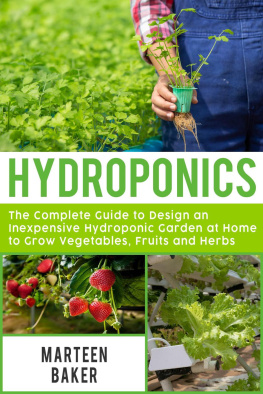
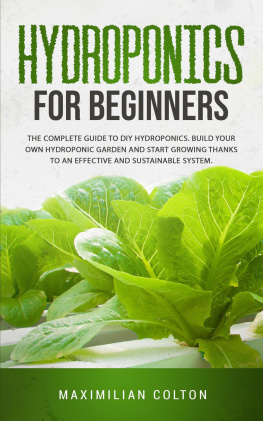

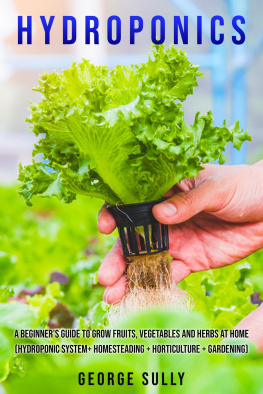
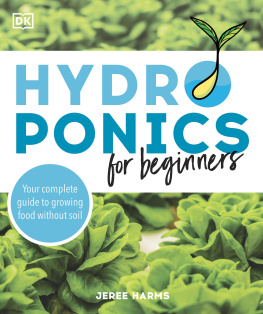
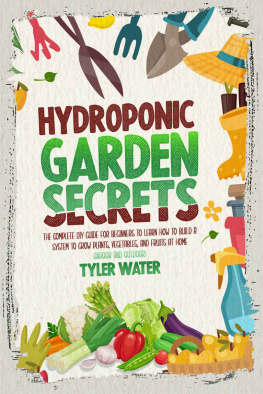
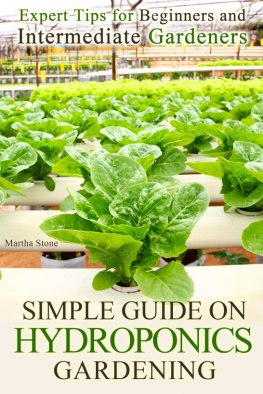
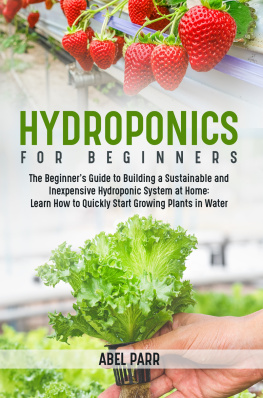
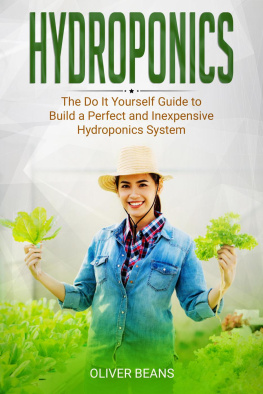

 HYDROPONICS
HYDROPONICS



